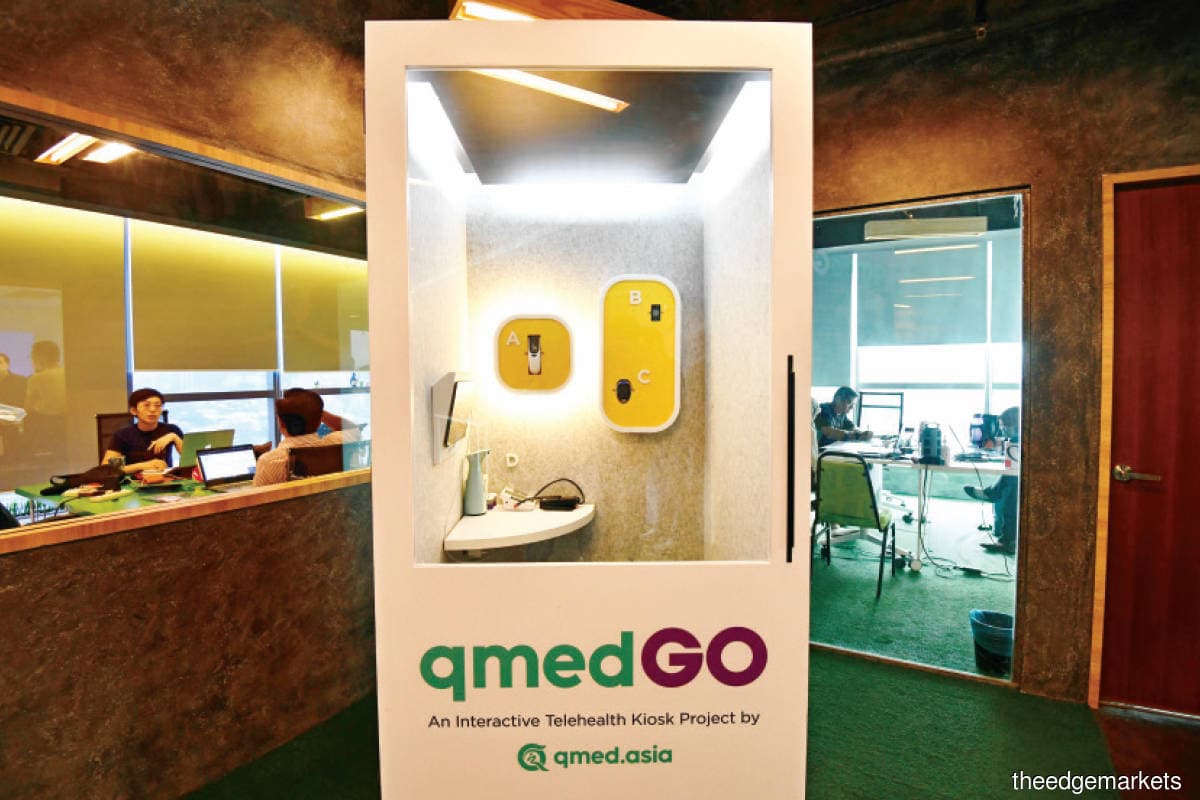
This article first appeared in Digital Edge, The Edge Malaysia Weekly on January 9, 2023 - January 15, 2023
Dr Kev Lim had long wanted to specialise in paediatrics but when his daughter fell ill in 2018, his ambition had to be put on hold. The 34-year-old took time off to tend to the toddler, whose medical condition required her to regularly undergo imaging, DNA testing and check-ups with follow-ups.
Taking care of his daughter, whose condition is likely to be a life-long battle, was no small feat, as his wife was pursuing her Master’s in paediatrics at that time. His frustration was exacerbated by the long waiting lines he experienced every time he brought the child for a check-up.
Lim had to juggle feeding his daughter, changing her diapers and checking the screen for their number to be displayed. He could not leave his spot in the event that her number was called, as he would have to take another token, which meant a longer waiting time.
But frustration breeds innovation. “Even though you cannot cut out the waiting time, you can give patients better waiting time expectations,” says the CEO and co-founder of QMed Asia.
Thus, the mobile leave queue solution was born. The solution allows patients to get their queue number directly on their phone while being able to monitor their queue status in real time. An added benefit is that patients do not have to wait at the premises, as they will receive a notification when it is close to their turn.
The queue solution was initially rolled out in four government clinics before being expanded to more government clinics, or klinik kesihatan, in Selangor, Negeri Sembilan, Kuala Lumpur, Putrajaya and Sabah. QMed assisted the government with the mobile queue leave solution during the national Covid-19 vaccination programme.
Healthcare in the workplace
Today, QMed has expanded into the provision of telehealth kiosks for corporations’ employee wellness programmes. The kiosks, known as QMed GO, are interactive and aim to bring convenience to corporations in the form of mini clinics that work through remote screening.
QMed has certified doctors on standby who can provide chronic disease management through regular check-ups at the workplace. Through QMed GO, employers are able to provide employees with services such as online consultations, online health screening, patient health records, engagement activities and gamification and long-term medication delivery.
The start-up currently offers interactive telehealth kiosks to corporations on a leasing model. It will offer a subscription model, which it aims to implement by year’s end. Leasing costs corporations RM999 for 24 months, or a lump sum of RM 20,000 per unit.
The kiosks can detect the 16 vital parameters of patients: blood pressure, heart rate, blood oxygen, blood sugar, body temperature, body height, body weight, body mass index, fat composition, water composition, blood ketone, total cholesterol, haematocrit, haemoglobin, uric acid and ECG.
“Our Internet of Things (IoT) [sensors] are a proprietary gateway that will gather the data from the medical device and send it to the cloud, the doctor dashboard and the patient portal. Remote screening means patients can perform vital checks without needing to be physically present in a medical facility,” says Lim.
He adds that artificial intelligence (AI) will eventually be embedded into the kiosk in the form of a symptom checker. “Patients can enter the kiosk, perform the vitals check, key in their symptoms, and they will be able to be diagnosed from that information.”
The QMed GO interactive health kiosks come in three variations that cater for different purposes. The models available are QMed GO, QMed GO Plus and QMed GO Lite. QMed GO is a compact booth with teleconsultation and remote patient monitoring. QMed Lite looks like a briefcase that patients can take home and perform vital sign monitoring and teleconsultation. QMed Plus is a larger, wheelchair-accessible booth.
They cater for two groups of employees: those who have no prior health concerns and those who do. The former group usually uses the kiosks on an impromptu basis when they do not feel well. On the other hand, patients with prior conditions such as diabetes or hypertension can attend weekly check-ups at the kiosk, says Lim.
The installation of the kiosks takes just half an hour. “It can be easily installed within 20 minutes with another 10 minutes to fine-tune the cabling. Within half an hour, we can set up the mini clinics anywhere,” he explains.
QMed aims to place the kiosks at factory sites and in condominiums while also expanding to other regions. Currently, its solutions have been adopted by more than 200 government centres and another 200 have been adopted by private centres, with two million patients and customers and an accumulation of 11 million unique bookings.
Save by subscribing to us for your print and/or digital copy.
P/S: The Edge is also available on Apple's AppStore and Androids' Google Play.

